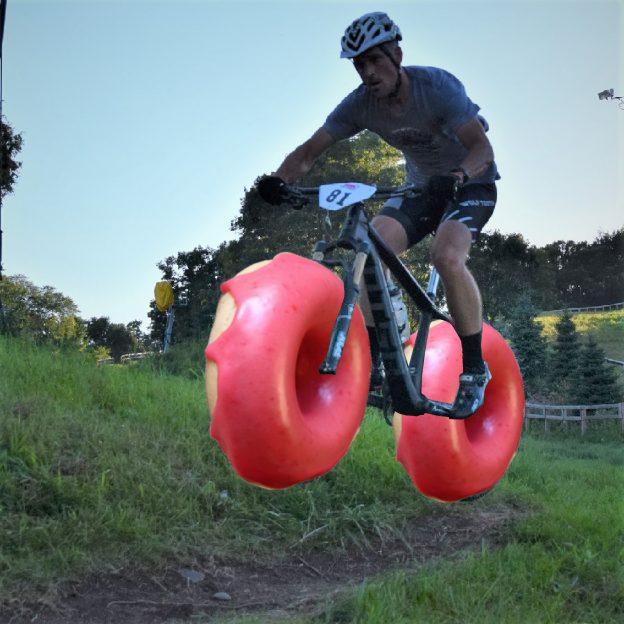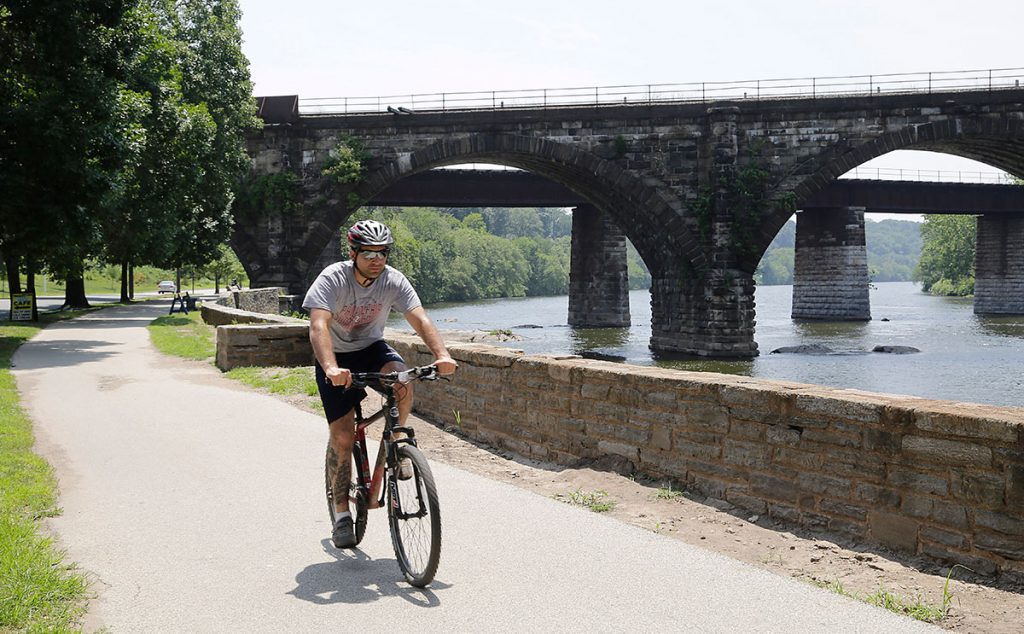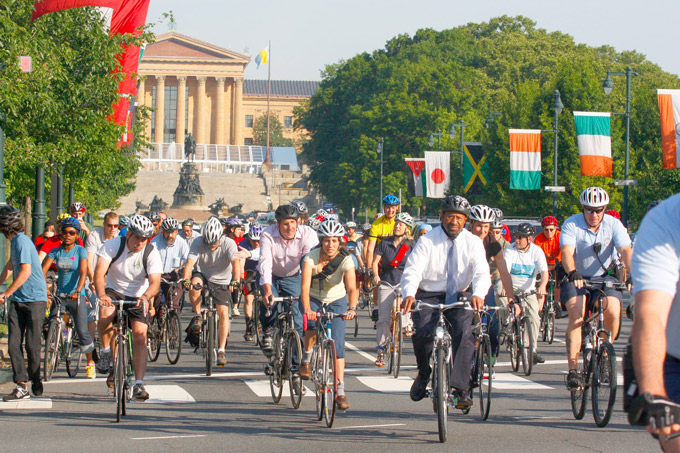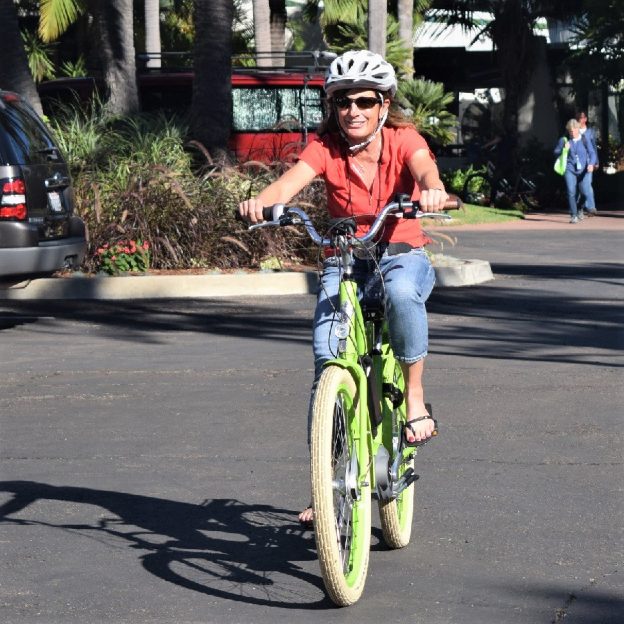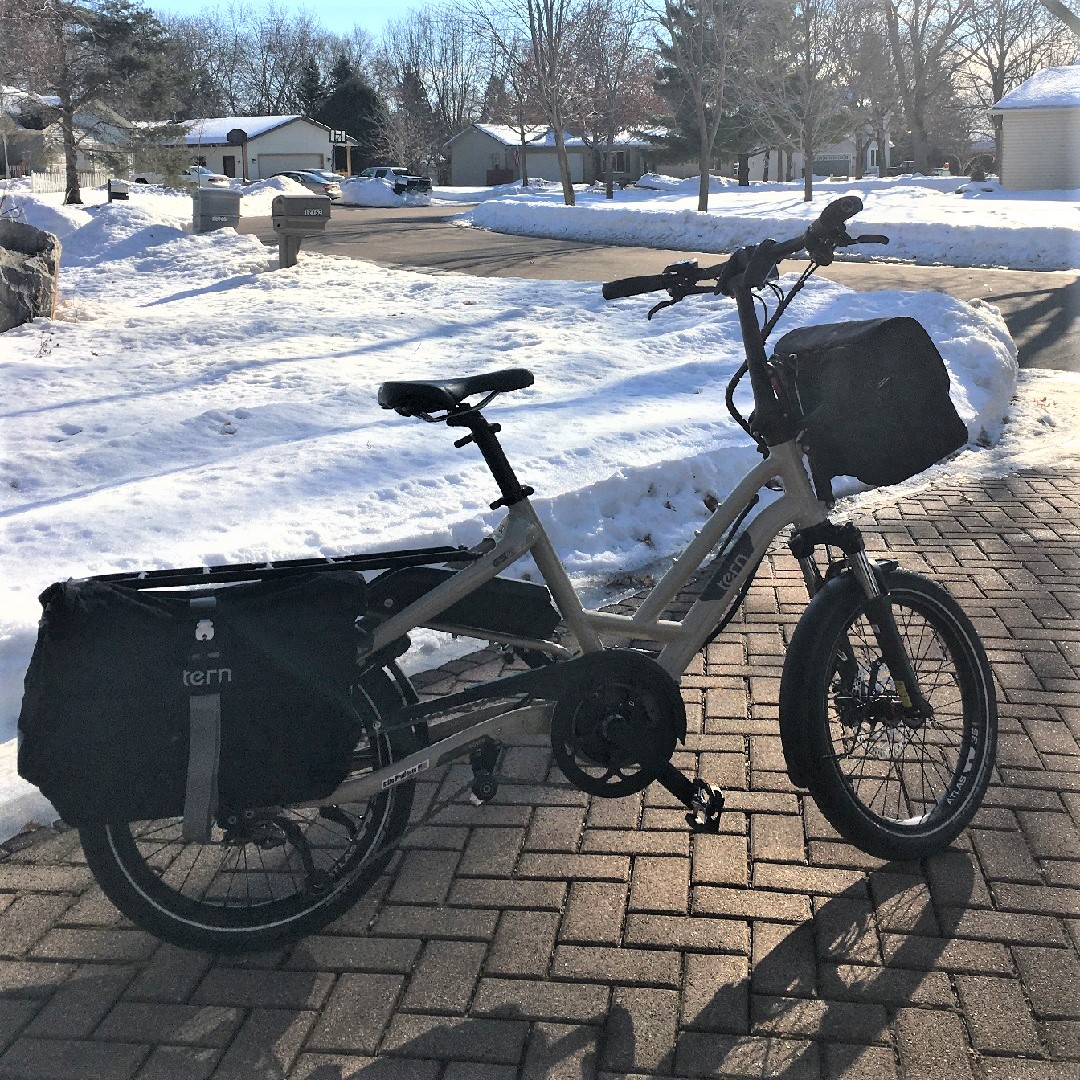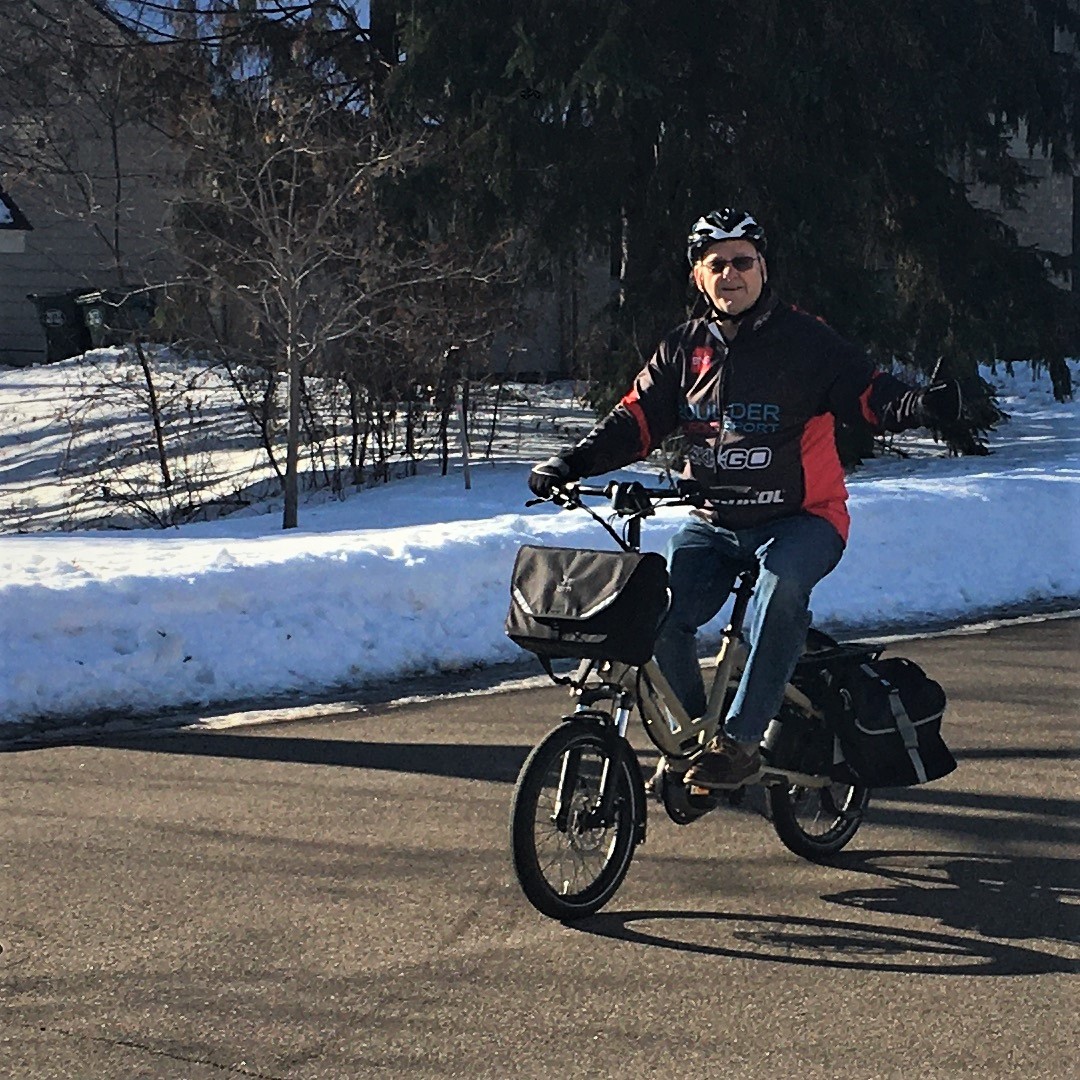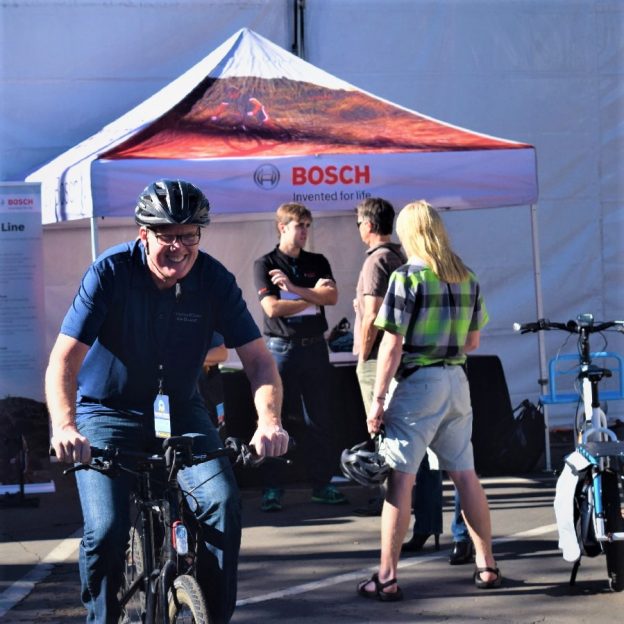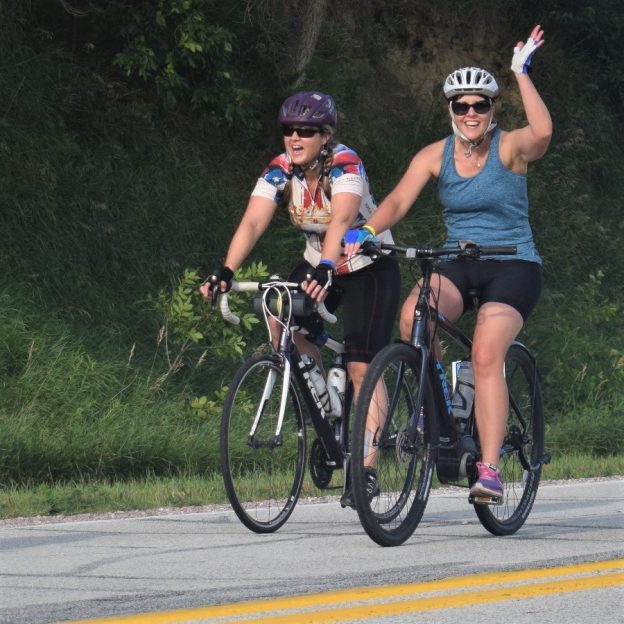by John Brown
Recently I spent some time in the cradle of liberty, Philadelphia. While there, I enjoyed a few rides, but the most enjoyable one was the Trek of Philadelphia’s Doughnut Ride. I was reminded of the joys of simple rides and good company, rather than difficult efforts and a competitive pace. Now, with 30 days of Biking a few weeks away, here is a fun idea you may want to consider with friends, as warmer weather moves our way soon.
The Doughnut Ride of Philly
We left the shop with a group of eight. Our bikes were a mishmash of road bikes, commuter rigs, single-speed, and an e-bike. When we departed the shop and headed toward the center city, it was immediately clear the pace would be conversational. Our cruise headed out on the river drive bike path, through Fairmount Park, and toward the center city. Rather than stay on the path, we crossed the Falls Bridge onto West River Drive. On the weekends, Philadelphia closes West River Drive so we had our run of the entire roadway. After a bit of riding and a lot of talking, we found ourselves at the end of West River Drive and at the base of the Art Museum.
At the Art Museum, our ride began to slip through the surrounding neighborhoods until we reached our hallowed destination – Federal Doughnuts.
We hopped back on our bikes after stuffing our faces with warm doughnuts. Full of sugar and fat, we returned to the bike shop along the same route. Ultimately, the ride took under two hours, including the time spent eating. Everyone had fun, the conversation was great, and we all got the chance to meet new people.
Why does this ride work?
The ride was great because the pace and route were clearly stated in advance. Therefore, everyone knew what to expect and where to go. The route itself was carefully chosen to promote great conversation and a casual pace. Every rider could enjoy the trip stress-free by including traffic-free paths and streets and a casual destination. Additionally, the pace is controlled by the ride’s start time. For example, a competitive-minded rider has a list of fast-paced rides leaving on Saturday morning, so there would be no need to come to the Doughnut Ride to try and get a killer workout with so many other options. From start to finish, this ride is a winner.
How to plan your ride
If you already lead rides for a local club or shop, setting up a casual ride should be easy. If this is your first attempt at leading an organized ride, then there are a few things to remember. First off, you want people to be at your ride! To ensure you have attendees, start talking about and advertising (if you’re working with a local club or shop) at least two weeks in advance. Also, ensure all your information explains the pace and payoff (in this case, doughnuts) for your ride to build interest. Finally, make sure your route is friendly to a group of riders. For example, I’ve been on a few rides requiring riders to be single-file almost the entire time due to narrow roadways. in contrast, the Doughnut ride promoted conversation with wide paths and clear roads.
According to Paul T. at Perennial Cycle, Minneapolis does a great job with these types of rides and has a lot of them. Watch for the upcoming events there this season.
